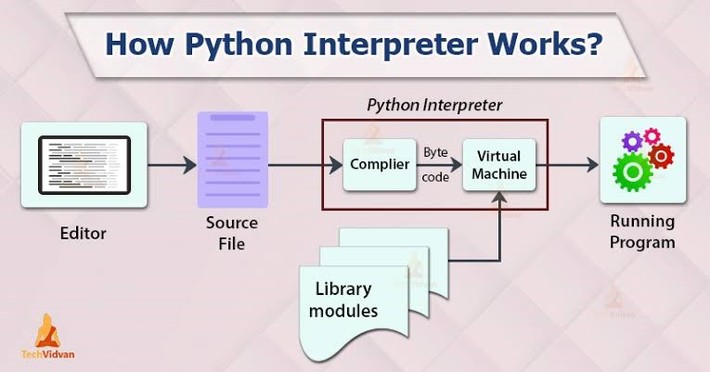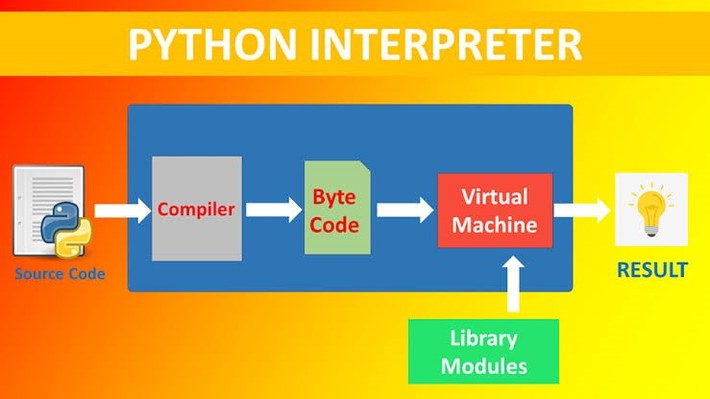
The default encoding for a Python supply report is UTF-8. This is a Unicode Standard variable-width individual encoding; it can encode 1,112,064 legitimate code elements in Unicode using as lots as four 8-bit bytes. Using this encoding, we can use most languages’ characters we can use those in string literals, feedback, and identifiers. Since the equal old library uses ASCII characters terrific, you need to declare using this encoding in your editor. This is to make sure that each one of such characters shows without trouble. The font should be such that it permits all characters in the file. Data science with python training has been designed keeping in mind about learners who have zero to some level of exposure to Python. Any ideal session in this course would dedicate a good amount of time to understanding the theoretical part after which we will be moving on to the application of theoretical concepts by doing hands-on these statistical techniques.
We upload this statement because the primary line of the document we want to apply it in-
# -*- coding: encoding -*-
In this, encoding is a good codec that Python permits. Similarly, while you need to apply the Windows-1252 encoding,
# -*- coding: cp1252 -*-
However, while you need to begin code with a UNIX shebang line, you can place the remark for encoding 2d-
#!/user/bin/env python3
# -*- coding: cp1252 -*-
How to Invoke the Python Interpreter?
On your tool, you may find out your Interpreter at an address like:
C: Python36
Or it may live at the location you selected at the time of installation. Add direction the use of this command:
Set course=%direction%;C:python36
Start the Python Interpreter On Windows, while you want to run the Python interpreter in the shell, you can kind the following:
$ Python
To get out of the Interpreter in dismantling the Bytecode shell, you could kind:
>>> give up()
Bye
Alternately, you could use an end-of-report person on the activate. Python interpreter exits with a 0 go out recognition.
$ Python demo.Py
To input interactive mode after walking a script, you can pass I before the hand.
The command python -c command [arg] ¦ executes statements in order, and python -m module [arg] ¦ implements the supply report for a module.
1. Features of Python Interpreter
Python interpreter gives some pretty cool functions:
- Interactive improving
- History substitution
- Code completion on systems with the guide for reading

In the number one Python set off, attempt pressing the following keys:
Ctrl+P
This tells you in case your Interpreter helps command-line enhancing. A beep shows that it does assist the command-line improvement. Otherwise, each will carry out a no-operation or echo ^p to indicate it isn’t to be had.
1. Passing Arguments
When you pass a script call and additional arguments to the shell on the equal time as invoking the Python interpreter, it turns the one’s proper right into a list of strings. Then, it assigns the ones to the variable argv in the sys module.
1. Interactive Mode
Python interpreter is in an interactive mode even as it reads commands from a tty. The primary prompt is subsequent:
>>>
When it indicates, this activates, it way it starts the developer for the next order.
Python interpreter is in an interactive mode while it reads commands from a tty. The primary prompt is subsequent:
>>>
When it indicates this spark off, it manner it activates the developer for the subsequent command. This is the REPL. Before it prints the primary prompt, the Python interpreter prints a welcome message that still states its model variety and a copyright phrase.
This is the secondary activate:
¦
This set off denotes continuation lines.
$ python3.7
Python three.7 (default, Jul 16, 2018, 04:38:07)
[GCC 4.8.2] on Windows
>>>
You will discover continuation strains at the same time as on foot with a multi-line construct:
>>> it_rains =True
>>> if it_rains:
Print(“The produce can be correct”)
The produce might be particular
You also can use the Python interpreter as a calculator:
>>> 2*7
14
>>> 4/2
2.Zero
Well, internally, four topics take place in a REPL:
1. Lexing- The lexer breaks the road of code into tokens.
Ii. Parsing- The parser uses those tokens to generate a shape, right right here, an Abstract Syntax Tree, to depict the connection among the one’s tickets.
Iii. Compiling- The compiler pivots this AST into code item(s).
Iv. Interpreting- The Interpreter executes every code object.
1.Function Objects & Code Objects
When we talk of feature gadgets, we advocate to mention that in Python, features are outstanding devices (capabilities in reality are devices). You can skip them round and talk approximately them without growing a name to them.
>>> def bar(a):
X=3
Skip back x+a
>>> bar
<function bar at 0x107ef7aa2>
Now bar.__code__ returns a code item:
>>> bar.__code__
<code object bar at 0x107eeccb2, document <stdin>, line 1>
So, we end that a code item is an characteristic of a feature object. The dir() function will inform us greater approximately the characteristic:
>>> dir(bar.__code__)
[__class__, __cmp__, __delattr__, __doc__, __eq__, __format__, __ge__,
__getattribute__, __gt__, __hash__, __init__, __le__, __lt__, __ne__, __new__,
__reduce__, __reduce_ex__, __repr__, __setattr__, __sizeof__, __str__,
__subclasshook__, co_argcount, co_cellvars, co_code, co_consts, co_filename,
co_firstlineno, co_flags, co_freevars, co_lnotab, co_name, co_names, co_nlocals,
co_stacksize, co_varnames]
This offers us the attributes of the code object. Values of a few greater attributes:
>>> bar.__code__.Co_varnames
(a, x)
>>> bar.__code__.Co_consts
(None, three)
>>> bar.__code__.Co_argcount
1
- The Bytecode
The following command gives us the bytecode:
>>> bar.__code__.Co_code
‘dx01x00x01x00a chain of bytes, every of which the Interpreter loops thru after which makes an execution.
1.Disassembling the Bytecode
We will use the dis() method from this module to recognize what’s happening- this isn’t part of what the Interpreter does.
>>>import this
>>> dis.Dis(bar.__code__)
2 0 LOAD_CONST 1 (three)
3 STORE_FAST 1 (x)
3 6 LOAD_FAST 1 (x)
Nine LOAD_FAST zero (a)
12BINARY_ADD
13RETURN_VALUE
In this, the number one set of numbers is the street numbers within the real code. The 2nd one depicts offsets of the bytecode. The subsequent column depicts the arguments, and the final column lists the constants and names within the fourth column.
>>> bar.__code__.Co_consts[1]
Three
>>> bar.__code__.Co_varnames[1]
‘x’
So, this has to turn out to be all about Python Interpreter Tutorial. Hope you want our rationalization.

Hence, we’re successful in mentioning the compiler for Python generates bytecode for the Interpreter. The Python interpreter makes use of this with the digital tool. The identical bytecode doesn’t commonly become doing the same topics. This is every super problem that makes Python dynamic. Also, the default action for the Interpreter is >>>. If we pass over some detail, enjoy unfastened to percentage with us in a statement section. Data science with python certification focuses on explaining various use cases, some of the very famous applications/services which use Python, and then we gradually move to understand data science workflow using Python theoretically. We will help you understand the basic components of any data science model, right from fetching your data from your database to building a model that is in a deployable form.
